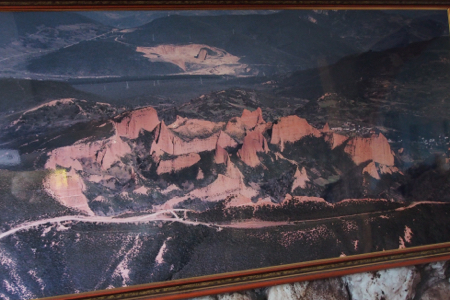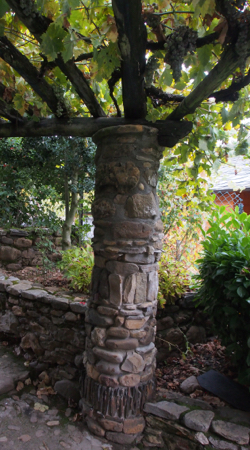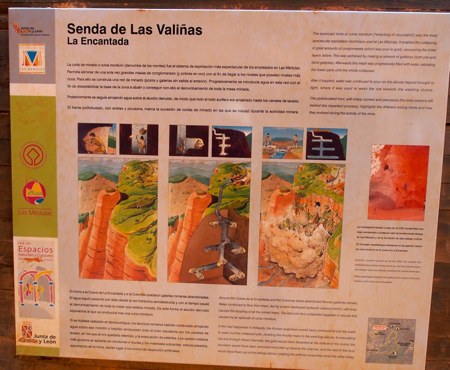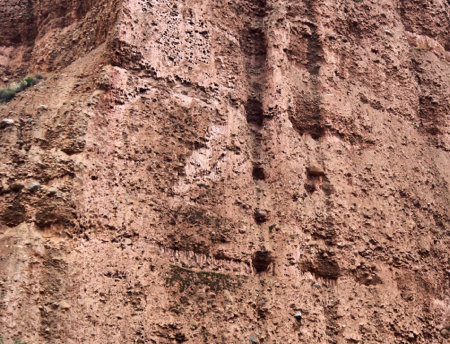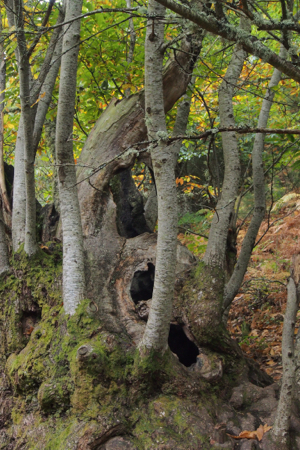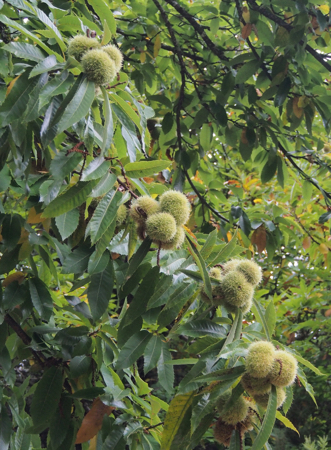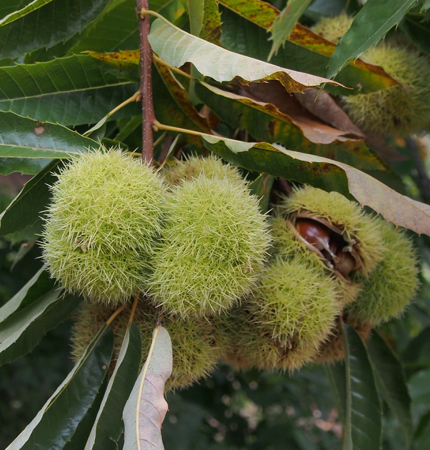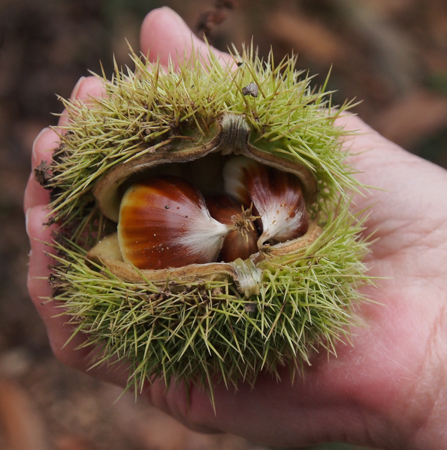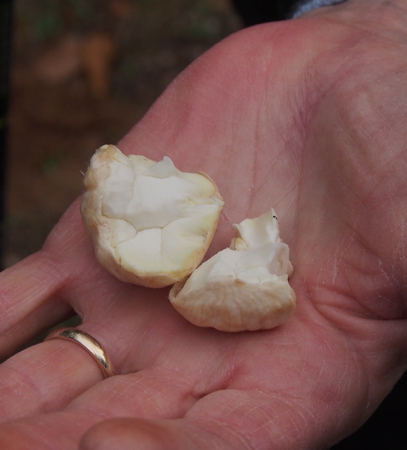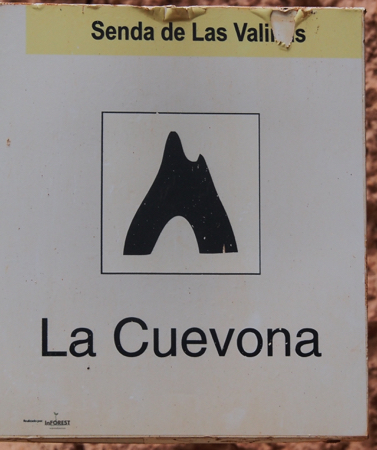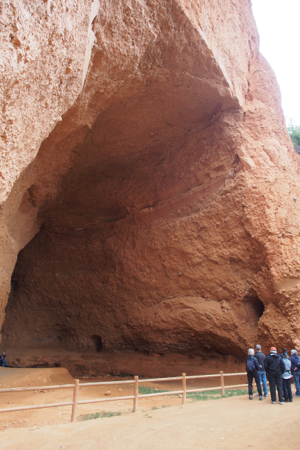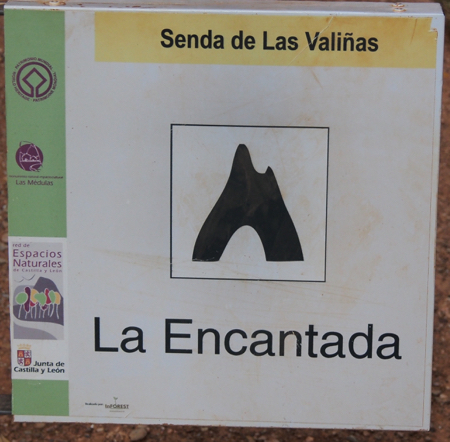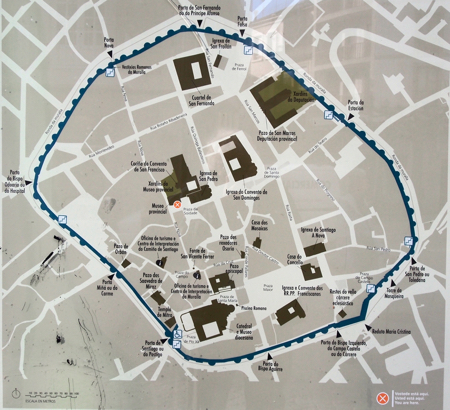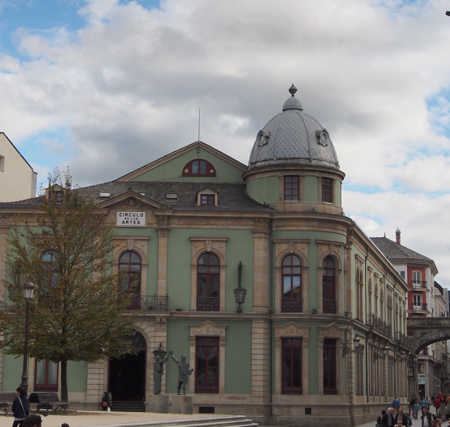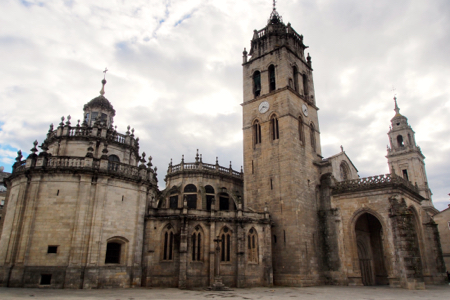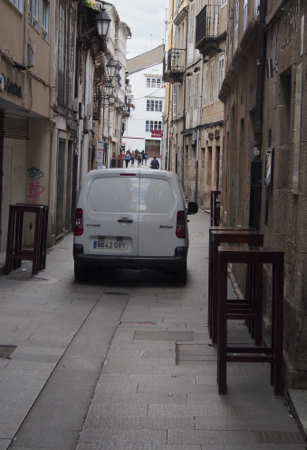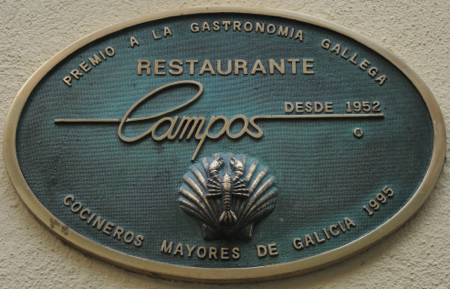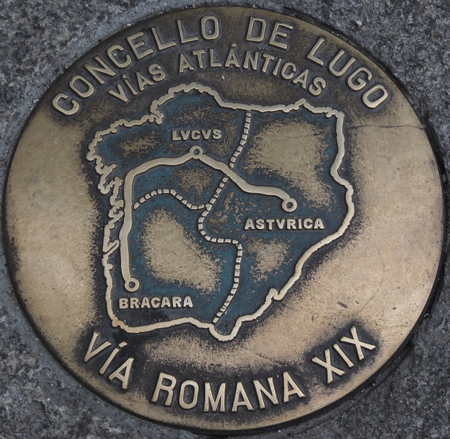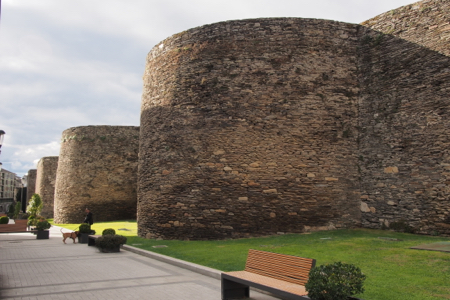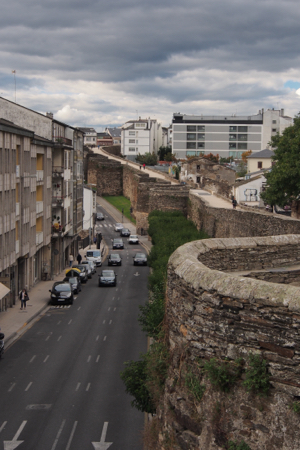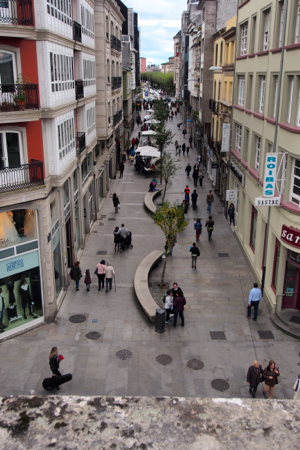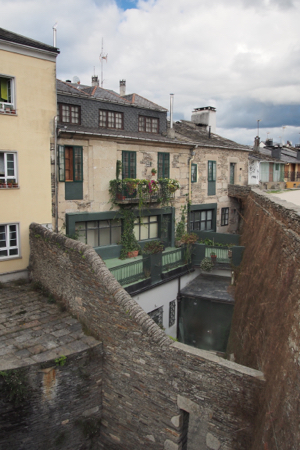Mon., 10/24/16 – Leon to Santiago de Compostela
Our first stop today was a highlight of our trip. Las Medulas has been a World Heritage Site since 1997. From 100 to 200 AD, the Romans mined gold in this small area using a system of hydraulic power. They built aqueducts to bring in water from the higher mountains, chiseled vertical and horizontal tunnels into the sedimentary hillside, poured in the water, and let the hill collapse. They then sluiced the sediment, letting the heavy gold catch in lavender branches that lined the bottom of the trough. There was not much gold recovered to send to Rome, but they changed the landscape to mounds that look like huge termite hills.
We walked a lovely path through chestnut trees, some 500-years-old, with new branches growing out of the old trunks, some were newly planted by the owners. Now is the picking season. Three nuts are taken from the burred coat after they fall to the ground. I tasted one and they are much better roasted! I also sampled wild blackberries growing along the path.
Site of ancient Roman hydraulic mining for gold
Photo of Las Medulas
Las Medulas
Grape vine
Slate roof
Illustration of ancient Roman hydraulic mining for gold
Bore holes and corridors
Bore holes and corridors
Hollowed out chestnut trees
Chestnut Trees
Chestnuts
Chestnuts
Chestnuts
Don't pick the Chestnuts
Site of ancient Roman hydraulic mining for gold
We “hiked” up to look at two huge caves that showed remnants of the tunnels. The sun finally came out.
After lunch we drove out of Castilla and into the Galacian region of Spain. The north of Spain may have been settled by the Irish or been settled here by people from western Ireland coming here by boat. There are many cultural similarities between this region and Ireland – language (like Gaelic), music (bagpipes), and even DNA.
We stopped to stretch our legs with a walk through Lugo. It is another town with “the best preserved Roman Wall entirely surrounding the old town.” The Romans were here because of the natural hot springs. We walked to the Cathedral/museum/convent of San Francisco and around part of the high wall.
Map of Lugo
Buildings and dark sky
Social club
Cathedral of Santa Maria
Cathedral of Santa Maria
Cathedral of Santa Maria
Tight squeeze
Way of St. James symbol
Restaurant sign
Plaque for Via Romana XIX - a Roman road
Roman walls
Roman walls
Scene from the walls
Scene from the walls
Dinner was at our hotel in Santiago de Compostela at 8:30. We got to bed right after the meal at 10:30. I can’t get used to this late dining.
| Return to Top | Return to Itinerary | Return to Trips page to view other trips | Return to Dreamcatcher Home Page |

